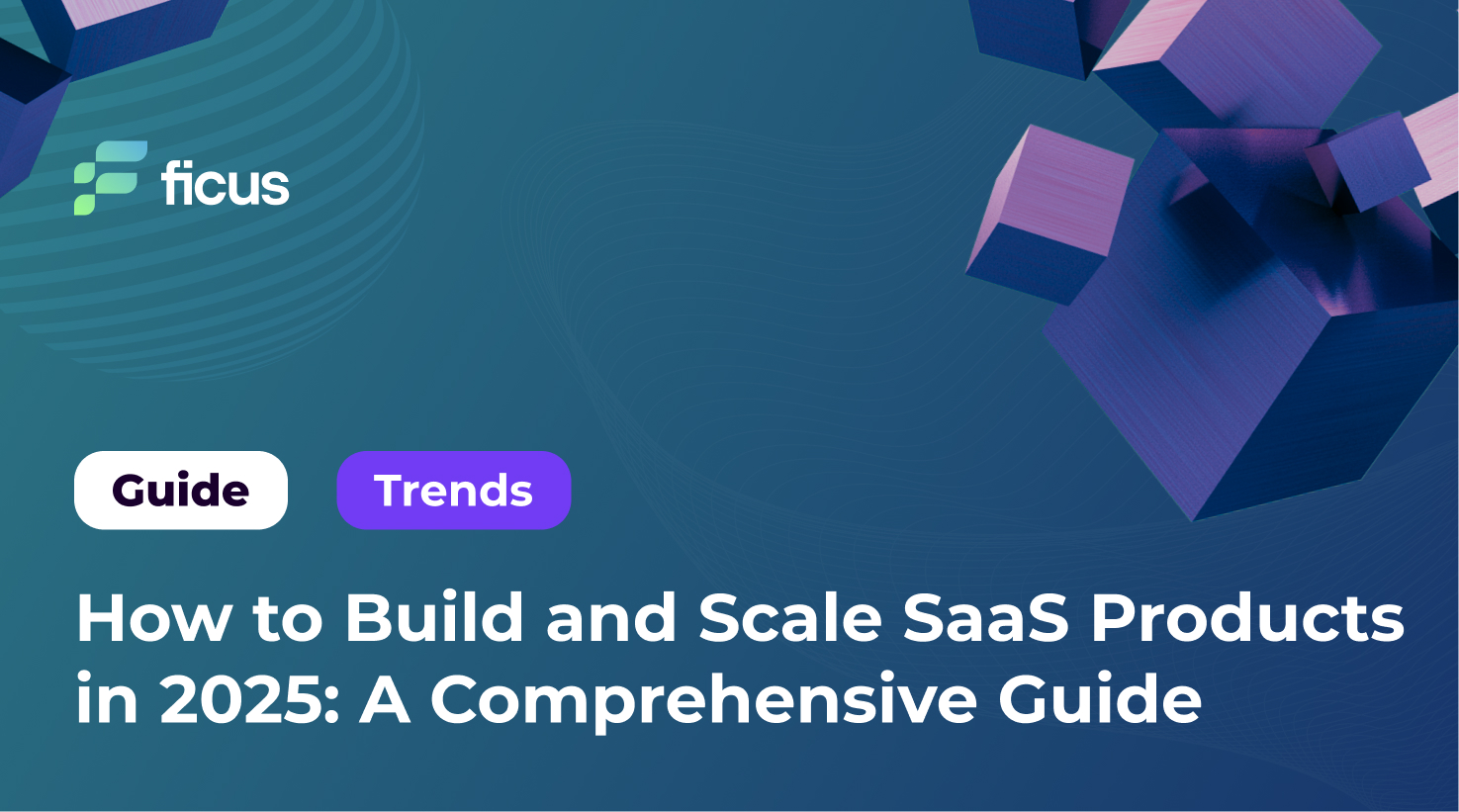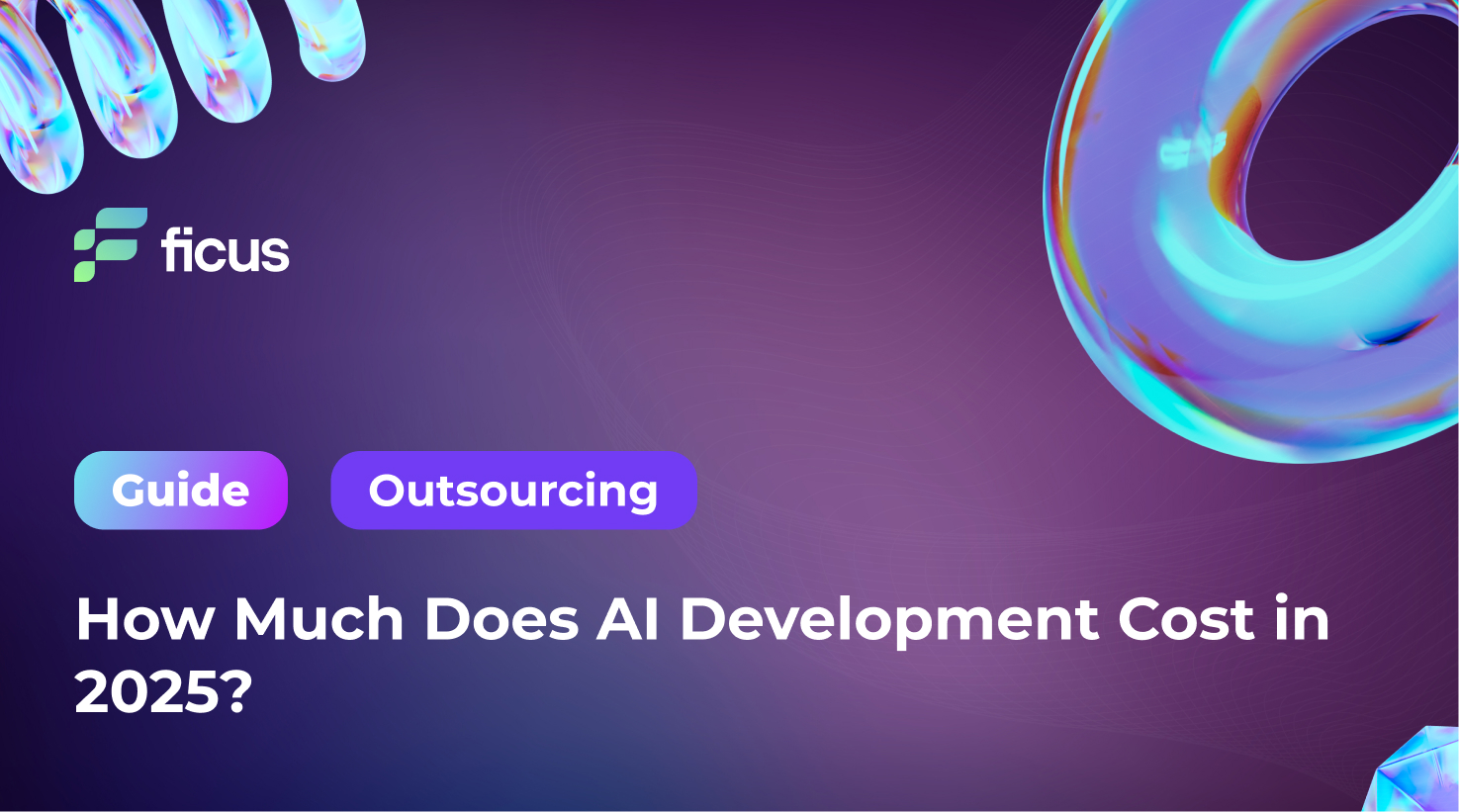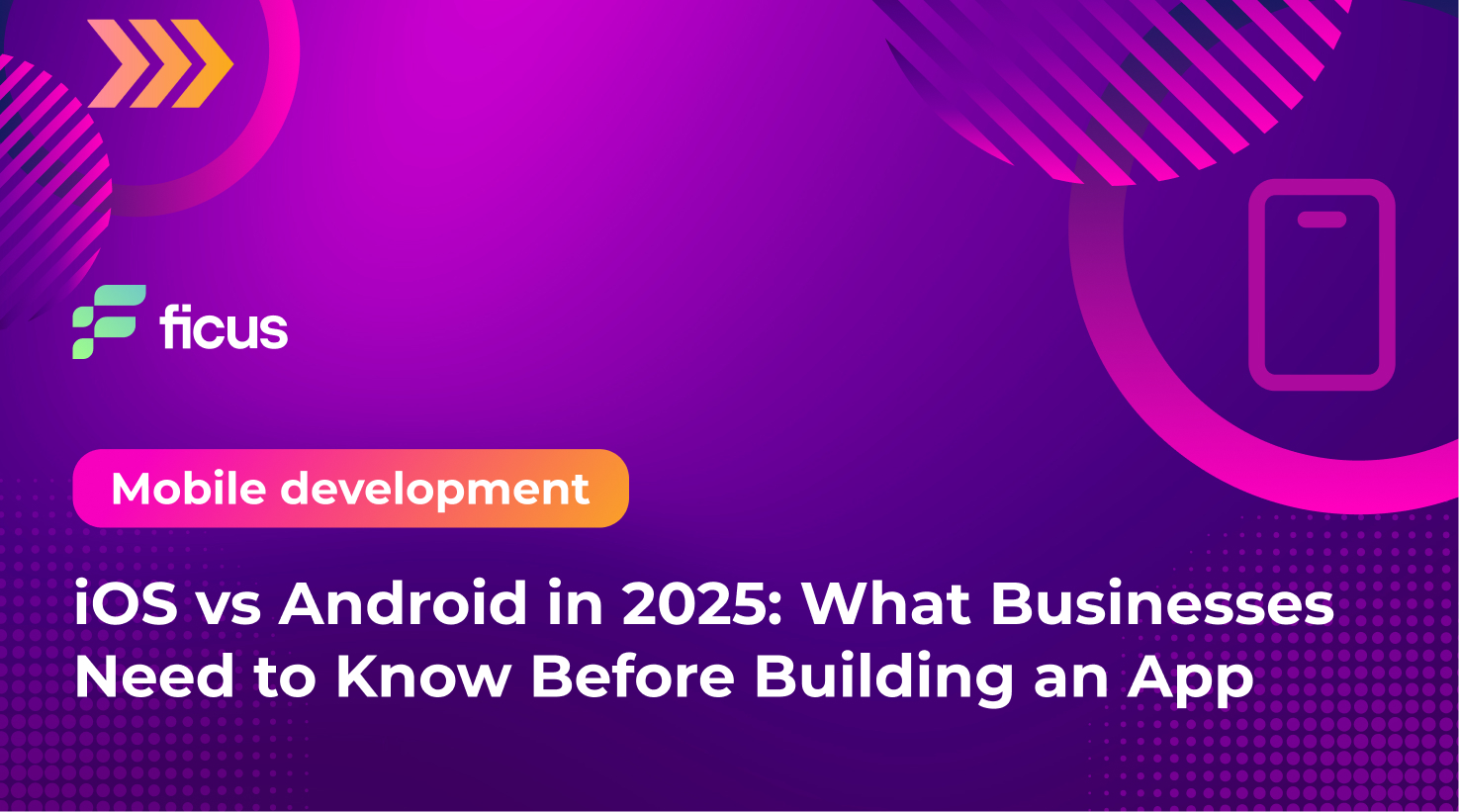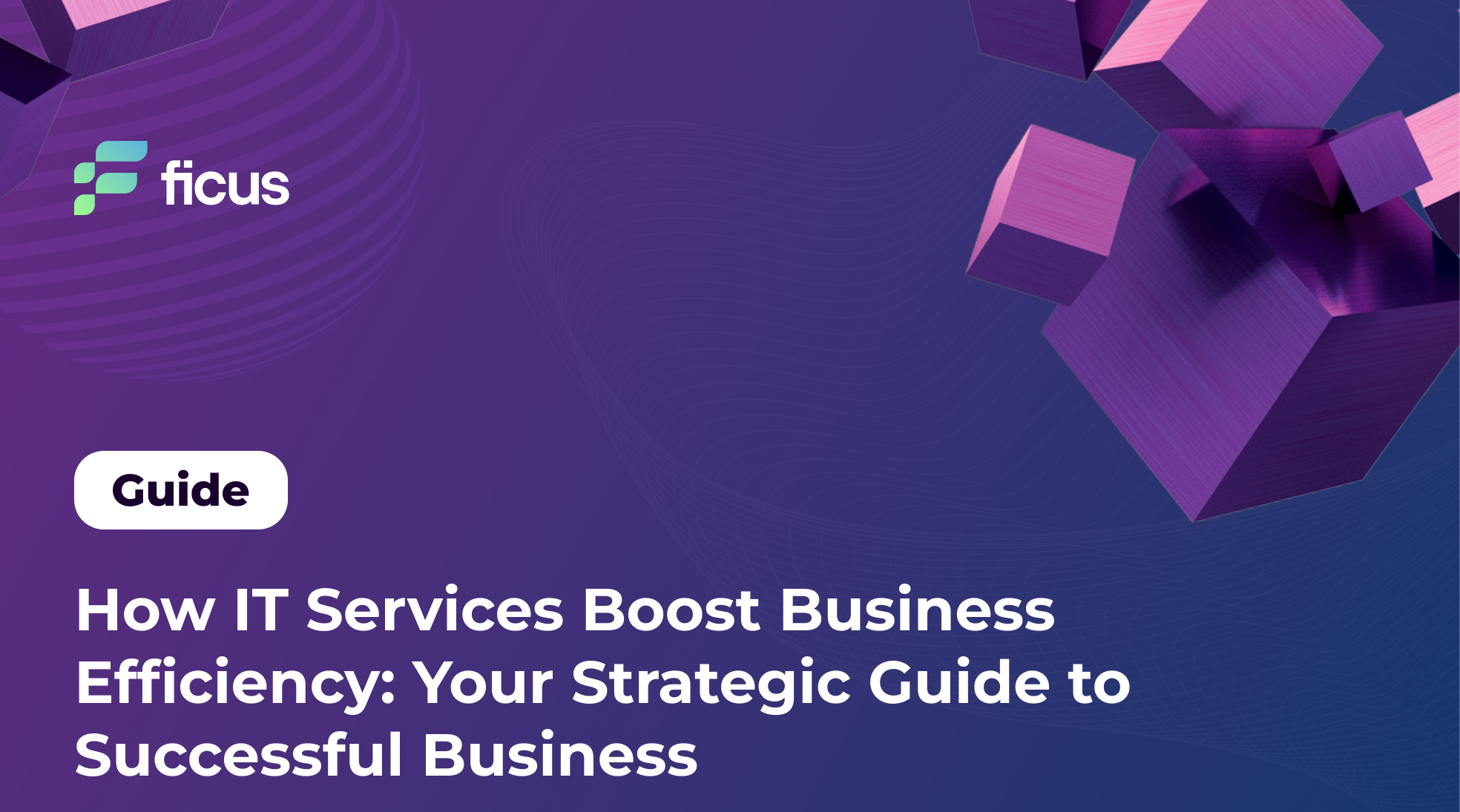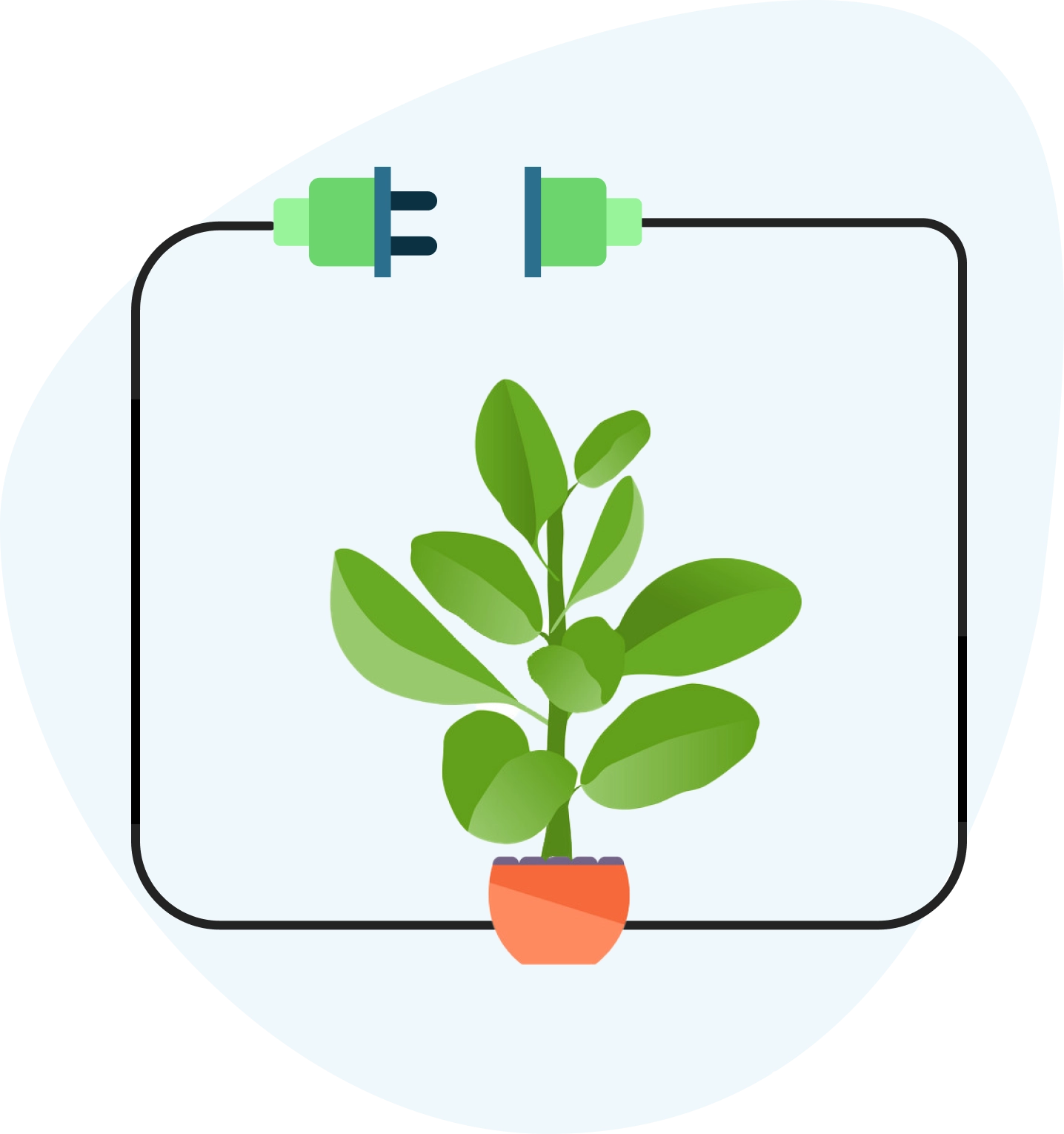The global demand for SaaS (Software as a Service) has exploded over the past decade—and in 2025, it has become the de facto model for delivering business software. Companies across industries are shifting from traditional software to cloud-based platforms to reduce infrastructure overhead, improve collaboration, and offer subscription-based flexibility to users. With the SaaS market projected to surpass $300 billion, driven by advancements in cloud computing, AI, and data integration, this evolution is more than a trend—it’s a foundational shift.
For business leaders, founders, and product teams, understanding how to build and scale SaaS products in 2025 is essential. This article from Ficus Technologies breaks down the current landscape, strategies, and technologies that define modern SaaS development. You’ll find in-depth insights into architecture, monetization, security, and development workflows that empower your team to build sustainable, high-performing SaaS platforms.
Product managers looking to optimize SaaS delivery workflows.
Tech teams building scalable, secure software platforms in 2025.
Investors and decision-makers evaluating SaaS models for long-term ROI.
- SaaS has become the default model for delivering business software in 2025.
- Modern SaaS success depends on strategic market validation, secure architecture, and flexible monetization.
- Ficus Technologies offers end-to-end SaaS development tailored to enterprise and startup needs.
What Is SaaS Development?
SaaS development refers to the process of creating software that is hosted in the cloud and delivered to users over the internet via a subscription model. Unlike traditional software installations, SaaS applications require no local setup—users simply log in from a web browser to access full functionality.
This delivery model is popular for its scalability, lower costs, ease of updates, and global accessibility. SaaS solutions typically rely on cloud infrastructure and offer centralized updates, meaning all users benefit from continuous improvements without needing to install anything manually.
Well-known examples of SaaS platforms include Google Workspace, Microsoft 365, Salesforce, Notion, and Zoom. In 2025, the range of SaaS offerings spans everything from project management tools to fintech platforms, telemedicine systems, and AI-driven analytics engines.
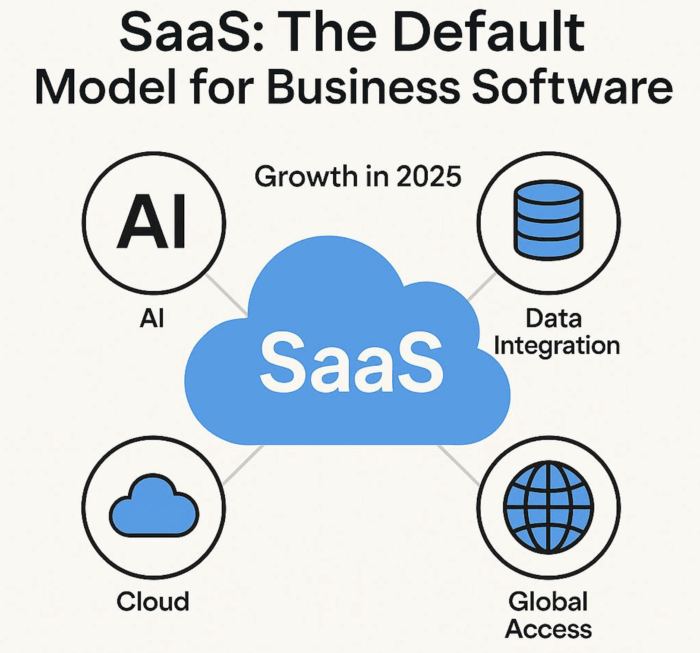
Core Benefits of SaaS for Businesses in 2025
Faster Time-to-Market – Cloud platforms and reusable microservices reduce development cycles. MVPs can be launched in weeks instead of months.
Lower Initial Investment – The subscription-based model allows businesses to avoid heavy upfront infrastructure and licensing costs. Instead, they pay incrementally based on usage or tier.
Seamless Maintenance and Upgrades – Updates are rolled out automatically across the platform, reducing downtime and IT overhead while maintaining user experience.
Effortless Scalability – Cloud-native architecture means SaaS platforms can scale on-demand, handling increased traffic or data without major refactoring.
Anywhere, Anytime Access – Remote teams, distributed enterprises, and global clients benefit from 24/7 availability via web or mobile interfaces.
Enhanced Collaboration and Integration – Real-time data syncing and API integrations allow cross-functional teams and third-party tools to work together seamlessly.
Usage-Based Analytics – SaaS platforms can monitor user behavior to inform product development and customer success strategies.
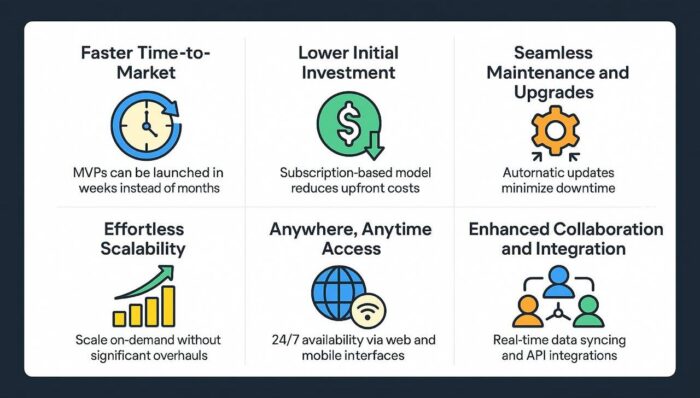
SaaS Development Strategy: The 2025 Approach
- Validate with Deep Market Insights
Start with strategic research:
Conduct interviews, analyze competitor offerings, and define clear customer personas. In 2025, niche-targeted SaaS platforms thrive by solving specific problems with precision.
- Define a Lean Yet Functional MVP:
Prioritize features that directly address the user’s pain points. Standard MVP components for SaaS in 2025 include:
- Secure user authentication
- Dynamic dashboards
- In-app analytics and reporting
- Responsive UI/UX across devices
- Subscription billing and user roles
- Native mobile compatibility
- Architect for Growth and Security
A modern SaaS platform must be resilient, secure, and capable of scaling globally. Architectural best practices include:
- Microservices & APIs: Decouple services for modular development and independent scaling.
- Containerization & Orchestration: Use Docker and Kubernetes for resource optimization and fault tolerance.
- Multi-Tenant Design: Offer shared resources while isolating client data securely.
- Cloud Agnostic Deployment: Ensure flexibility across AWS, Azure, or GCP for redundancy and expansion.
- Prioritize Security and Regulatory Compliance
Data protection is paramount. Build with end-to-end encryption, conduct penetration testing, and align with frameworks such as:
- GDPR (EU)
- HIPAA (Healthcare)
- SOC 2 (Enterprise SaaS)
- ISO/IEC 27001 (Information Security)
- Create a Flexible Revenue Model
SaaS monetization in 2025 demands versatility. Explore models such as:
- Freemium with Advanced Tiers
- Usage-Based Billing
- Custom Enterprise Contracts
- Partner-Based Revenue Sharing
- Allow customers to upgrade, downgrade, or scale services seamlessly based on real-time needs.
- Embrace Agile Delivery and Iteration
Continuous delivery pipelines enable weekly (or even daily) deployments. Integrate tools like Jenkins, GitHub Actions, and automated test suites. Feedback loops—driven by user analytics—should directly inform product roadmap adjustments.
Want to stay ahead of the curve? Let Ficus Technologies help to embrace the development methods of tomorrow, today.
Contact usConclusion
SaaS development in 2025 is no longer simply about creating software — it is about building resilient, intelligent, and scalable ecosystems that drive measurable business value. Companies adopting SaaS solutions today are not just reducing infrastructure costs; they are gaining the ability to scale globally, integrate seamlessly with other tools, and deliver continuously improved user experiences.
The winners in this market will be organizations that validate their ideas early, embrace secure and flexible architectures, and adopt agile delivery as a constant practice. Success in SaaS requires balancing speed with security, cost-efficiency with innovation, and usability with scalability.
For startups, SaaS offers the fastest path to market entry, while enterprises rely on it to modernize legacy systems and expand globally. In both cases, the opportunity is the same: to transform software into a living, adaptive service that evolves alongside customer needs and industry demands.
With the right partner, SaaS development becomes more than a technical project — it becomes a strategic enabler of growth, resilience, and competitiveness. Businesses that act now will not only keep pace with digital transformation but also shape the next wave of the SaaS economy.
Why Ficus Technologies?
In a SaaS market defined by speed, scalability, and security, the right development partner makes the difference between launching a functional product and building a truly competitive platform. At Ficus Technologies, we don’t just write code — we help companies design SaaS ecosystems that grow, adapt, and deliver measurable business value.
Our approach is rooted in three pillars: technical excellence, strategic alignment, and long-term partnership. We bring cross-industry expertise in fintech, healthcare, logistics, retail, and education, allowing us to anticipate sector-specific challenges and tailor solutions accordingly. With over 70% senior-level engineers, our teams combine deep technical skills with leadership and mentorship, ensuring faster delivery and higher-quality outcomes.
What sets Ficus Technologies apart is our ability to integrate technology with business strategy. We validate ideas early, design cloud-native architecture for resilience, and build security and compliance into every layer. Our Agile-first workflows enable rapid iteration, while our AI-powered analytics and automation help clients stay ahead of market trends.
Whether you are a startup validating your first MVP or an enterprise scaling globally, Ficus Technologies provides the talent, processes, and innovation to turn your SaaS vision into a lasting success.
Scalability, security, user experience, and flexible monetization.
Typically 6–12 weeks, depending on scope and complexity.
Yes. We provide cloud migration, re-architecture, and UX transformation services.
Nearly all—especially fintech, healthcare, logistics, retail, and education.
We offer full-lifecycle development, domain-specific experience, and modern engineering standards.
